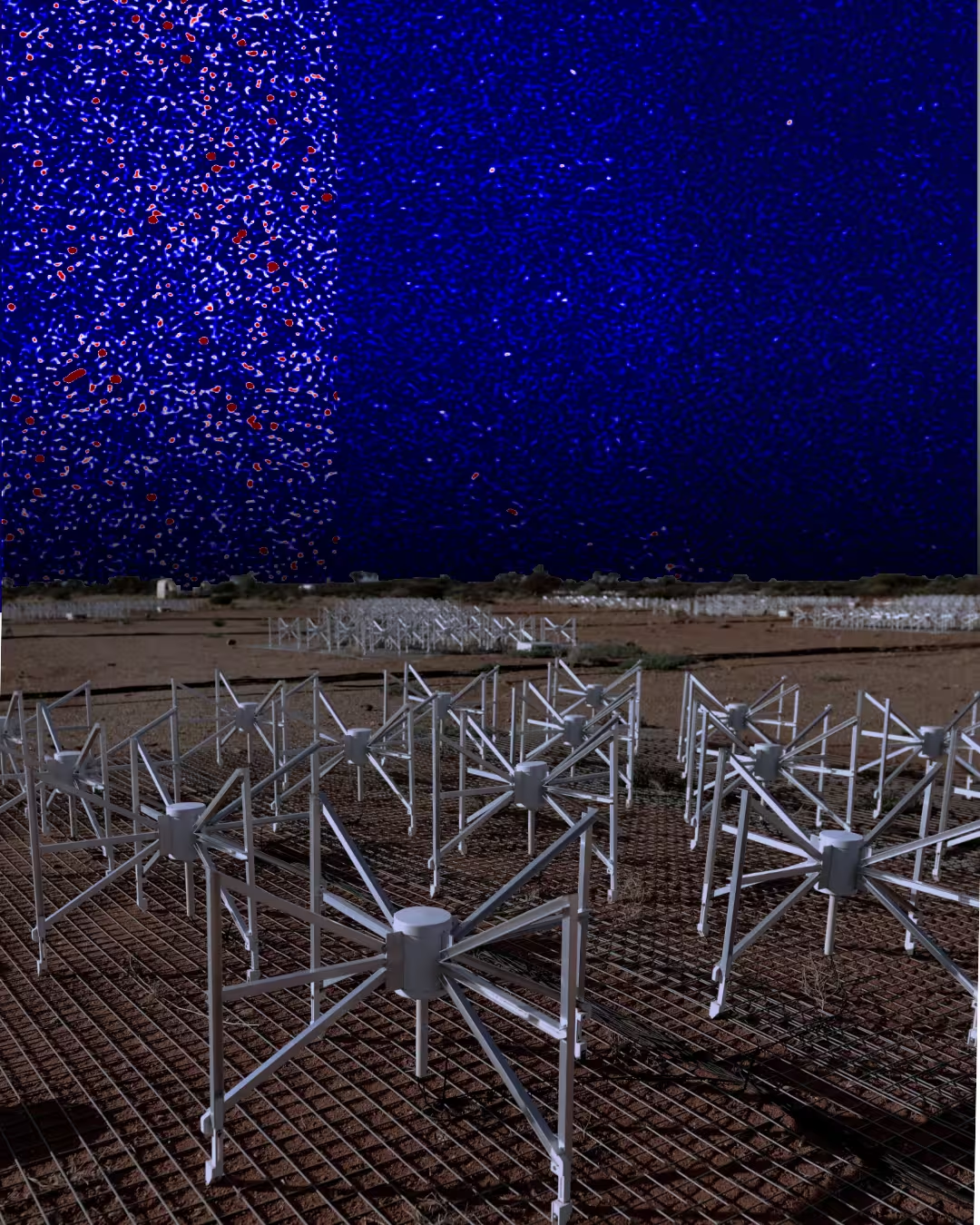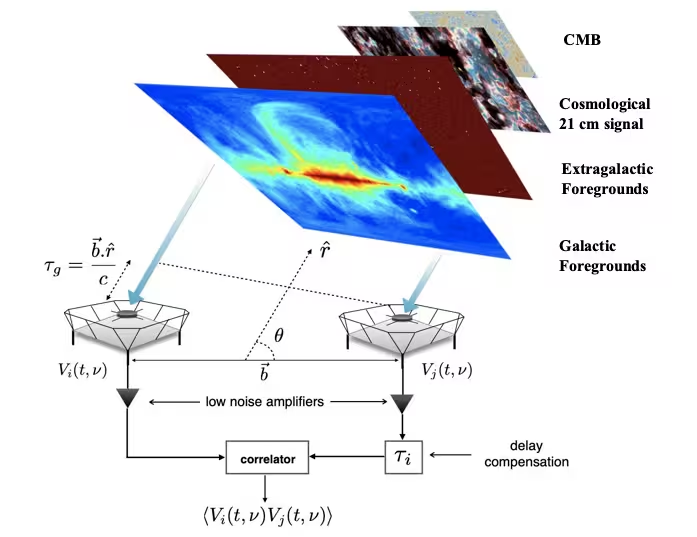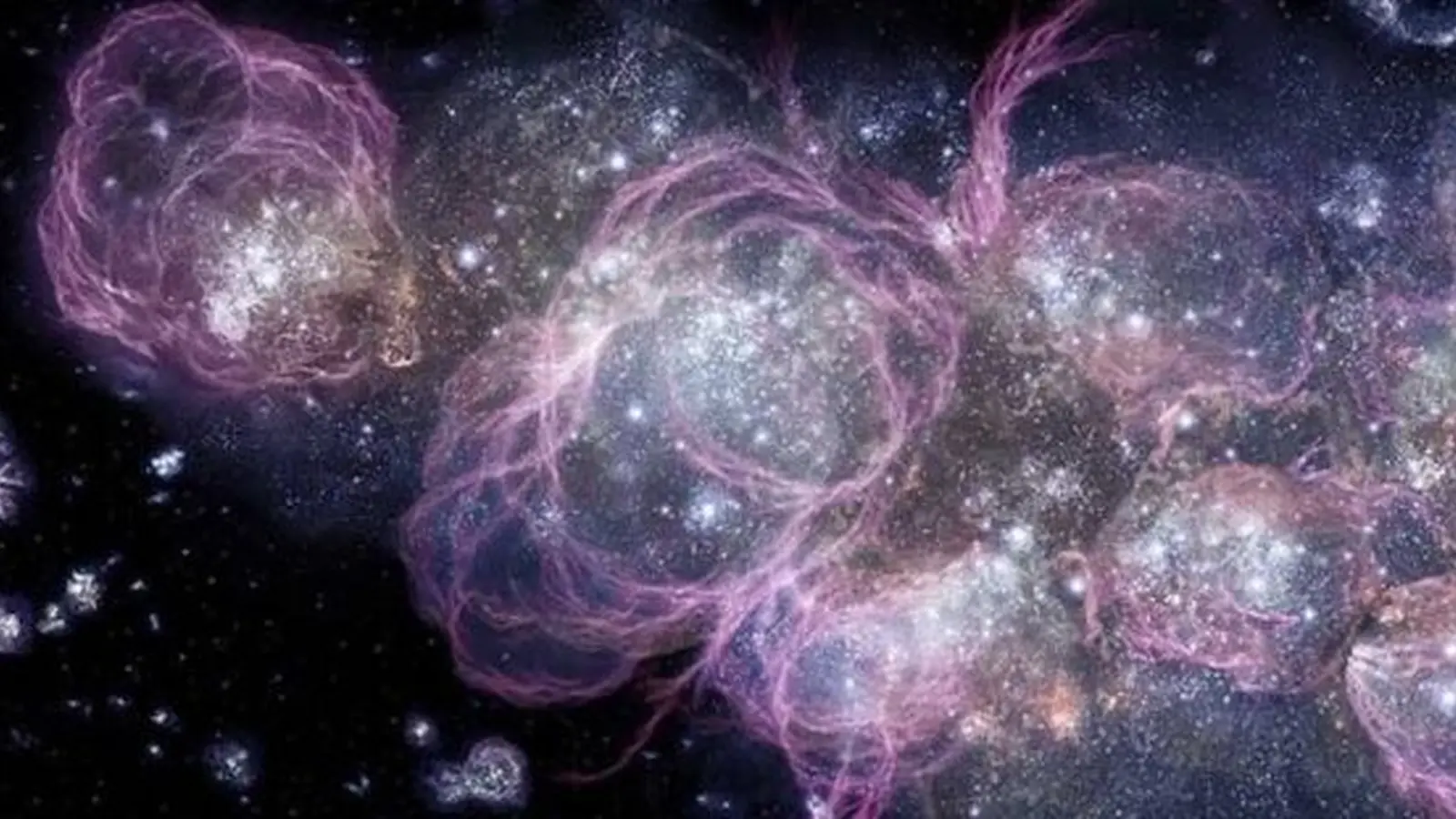6 Minutes
New analysis suggests early cosmos retained heat before first stars
A team at the International Centre for Radio Astronomy Research (ICRAR) reports evidence that the intergalactic medium was warmer than previously assumed during the era when the first stars and galaxies formed. The result, drawn from a deep radio analysis using the Murchison Widefield Array (MWA), challenges models that treat the Universe as emerging from an ultracold state and places new constraints on how and when the first luminous sources influenced their surroundings.
Scientific background: the Epoch of Reionization and the 21-centimeter signal
The Epoch of Reionization (EoR) marks the interval when the first generations of stars, black holes and stellar remnants emitted radiation strong enough to ionize the neutral hydrogen that filled the cosmos. Before those sources turned on, the Universe passed through a so-called cosmic "dark age," a period with virtually no luminous sources apart from the residual glow of the Big Bang.
Radio astronomers probe that era using the 21-centimeter hydrogen line — a very long-wavelength radio signal produced by neutral hydrogen. Because 21-cm waves penetrate intervening gas that scatters visible light, detecting them would reveal the thermal and ionization history of the early Universe. A clear detection would constrain when X-rays and ultraviolet photons began to heat and ionize the intergalactic gas.
Observations, data processing, and the MWA campaign
The ICRAR team combined roughly a decade of MWA observations to reach unprecedented sensitivity. Extracting a cosmological 21-cm signal is exceptionally difficult because the sky is dominated by bright radio emission from nearby galaxies, the Milky Way, human-made interference and instrumental noise. The team developed refined foreground-subtraction techniques and calibration methods to isolate faint cosmological fluctuations from dominant contaminants.

The progression of MWA images (top), starting with radio noise from foreground sources (left), local interference (middle), and finally the quiet, 'cleaned up' image (right). (Nunhokee et al/ICRAR/Curtin University)
According to ICRAR researchers, their pipeline improves understanding of instrument systematics and foreground morphology, which in turn increases confidence in residual maps where a cosmological signal could appear. Although the study did not produce a definitive detection of the 21-cm line, the quality and depth of the residual data allow the team to place new upper and lower limits on the gas temperature before and during reionization.

Foreground interference needs to be removed to reveal the faint, sought-after 21-centimeter signal (Nunhokee et al. ApJ, 2025)
Key discovery: evidence for a "pre-heated" intergalactic medium
The principal finding is that the intergalactic medium was not as cold as many minimal models assume. The ICRAR analysis indicates a modest level of heating had already occurred prior to or during the onset of reionization. While the heating is not enormous, it is sufficient to rule out scenarios in which reionization proceeds entirely under extremely low-temperature conditions.
The most plausible heating sources are high-energy X-rays produced by the first accreting black holes and by stellar remnants such as X-ray binaries. X-rays can travel significant distances, depositing energy into neutral gas and raising its temperature over large volumes — a mechanism that would produce the sort of moderate pre-heating seen in the MWA constraints.
Implications for cosmology and galaxy formation
These new constraints refine models of early structure formation. Warmer gas affects the timing and topology of reionization: heated gas reduces strong 21-cm absorption signals and changes the contrast between ionized regions and the surrounding neutral medium. The result therefore informs simulations that couple star formation, black-hole growth, and radiative transfer across cosmic scales.
In practical terms, ruling out extremely cold reionization scenarios helps narrow parameter space for upcoming experiments and guides theoretical forecasts for instruments like the Square Kilometre Array (SKA), Hydrogen Epoch of Reionization Array (HERA) and other low-frequency radio arrays.
Expert Insight
"Combining long-baseline observational campaigns with careful instrument modeling is the key to unlocking the cosmic dawn," says Dr. Mira Anand, an observational cosmologist not affiliated with the ICRAR study. "These results don't yet give us a direct 21-cm detection, but they meaningfully constrain the thermal history and point toward X-ray sources playing an early and measurable role. That's crucial for the next generation of experiments."
Future prospects and next steps
ICRAR scientists expect that additional observations and continued improvements in foreground mitigation will reveal the buried 21-cm signature. As more sensitive arrays come online and collaborations pool long-duration datasets, the combination of improved signal extraction and broader frequency coverage should lead to a positive detection within the next few years.
A confirmed 21-cm detection would allow astronomers to map the timing and spatial pattern of heating and ionization, isolating the contributions from early stars, black holes, and other exotic sources. That mapping will transform our understanding of how the first luminous objects formed and how they changed the intergalactic environment.
Conclusion
The ICRAR study represents a significant step toward decoding the cosmic dawn. By integrating a decade of MWA data and advancing foreground-subtraction methods, the team has constrained the thermal state of the early Universe and shown that a degree of pre-heating preceded or accompanied reionization. While the long-sought 21-centimeter detection remains buried beneath foregrounds for now, the path to uncovering it is becoming clearer — and with it, a more precise narrative of how the first stars and black holes transformed the cosmos.
Source: sciencealert


Leave a Comment